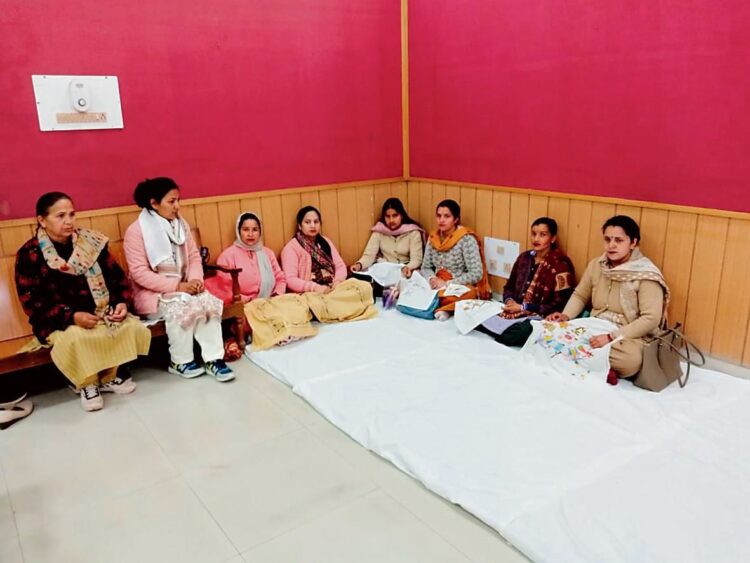The workshop/exhibition on Chamba Rumal starts
Today marked the beginning of a week-long exhibition and workshop on Chamba Rumal at the Bhuri Singh Museum.

Ten artists were taking part, according to museum curator Narender Kumar, with the assistance of well-known Chamba Rumal artists Masto Devi, Heena Thakur, and Indu Sharma. Kumar further said that the course will highlight the cultural relevance and delicate beauty of Chamba’s traditional artwork.
He stated that in addition to admiring the fine workmanship, guests will also get a taste of Chamba’s rich history.
With a long history that stretches back to the 17th century, the Chamba Rumal originated in the Himachal Pradesh area of Chamba. It was originally used to wrap idols and holy texts during religious rituals and as a ceremonial gift in temples. It developed into a highly esteemed art form throughout time, appreciated for its stunning beauty and skillful workmanship.
The Chamba Rumal is distinguished by its painstaking needlework, which is distinguished by vivid colors, elaborate designs, and a special stitching method called “do-rukha,” or double-sided embroidery. Designs are rendered equally lovely on both sides of the cloth thanks to this process.
Chamba Rumals often include images from Hindu mythology, folklore, and the natural world. Silk threads are used to meticulously stitch these elaborate designs onto exquisite muslin or khaddar material. Frequently, the themes include components that are quite detailed and precise, such flower patterns, birds, animals, and human figures.
A number of socioeconomic circumstances contributed to the art of Chamba Rumal’s demise in the 20th century, despite its historical and cultural value. Nonetheless, the government, cultural organizations, and artists have worked together to revitalize and save this antiquated art form. In 2007, Chamba Rumal was also issued a GI Tag.







